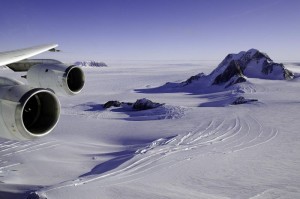Antarctica is a weird place. Scientists have long studied the behavior of its massive ice sheets and the land underneath them in the hopes of understanding the unique geological quirks of the continent, but are frequently puzzled by new discoveries. Now, one of the biggest head-scratchers of all might finally have an answer, and it all starts deep under the surface.
In an area of West Antarctica called Marie Byrd Land, the ice sheet seems to have a mind of its own, rising and falling by as much as 20 feet over relatively short periods of time. NASA’s newest research effort has demonstrated that the reason for this odd behavior is likely to be an incredibly hot mantle plume deep under the surface.
A mantle plume, which is an area where geothermal heat generated deep within the planet pushes closer to the surface through cracks other gaps, is thought to be responsible for huge subsurface lakes and water flow underneath the ice sheet. Because the geothermal activity isn’t constant, the water comes and goes, filling and draining, which in turn affects the height of the ice sheet far above it.
NASA’s Jet Propulsion Laboratory were able to crack the mystery by creating a data model of a mantle plume based on observations of the geothermal activity at Yellowstone, which hosts a supervolcano. Using that model, the researchers were able to demonstrate that underground heat sources were likely responsible for the changes in the ice sheet visible on the surface.
The research will help inform further study of the area and potentially aid in predictions of future changes in the Antarctic landscape. Scientists regularly study the ice loss of Antarctica as a potential indicator of how global warming is affecting sea levels both now and into the future, but it seems in this particular case the Earth is playing games with Antarctica all on its own.
Source: yahoo.com
Ask me anything
Explore related questions





